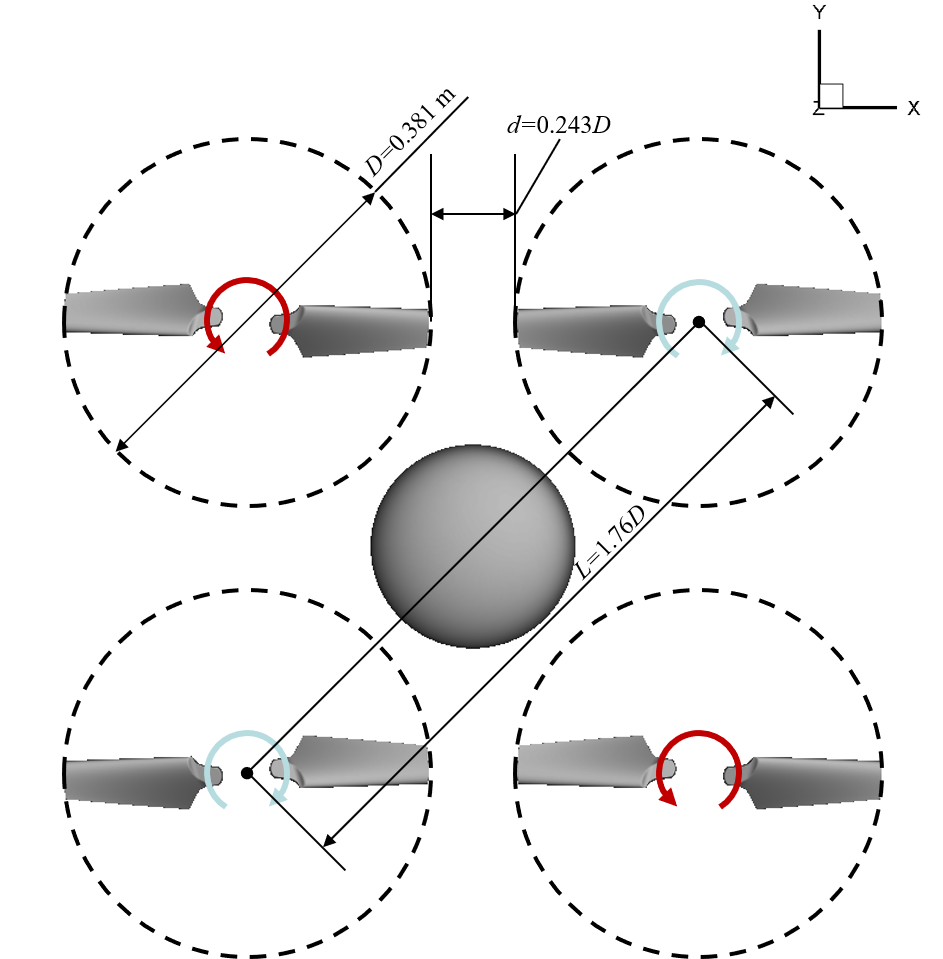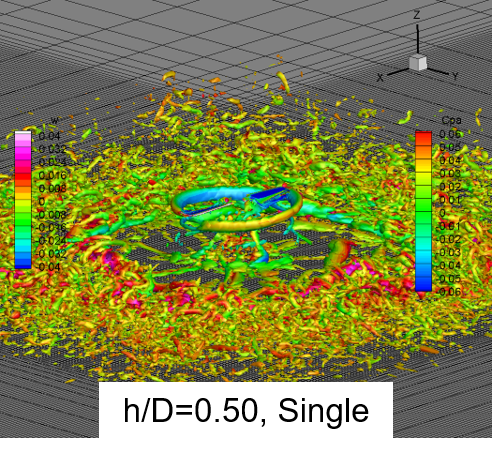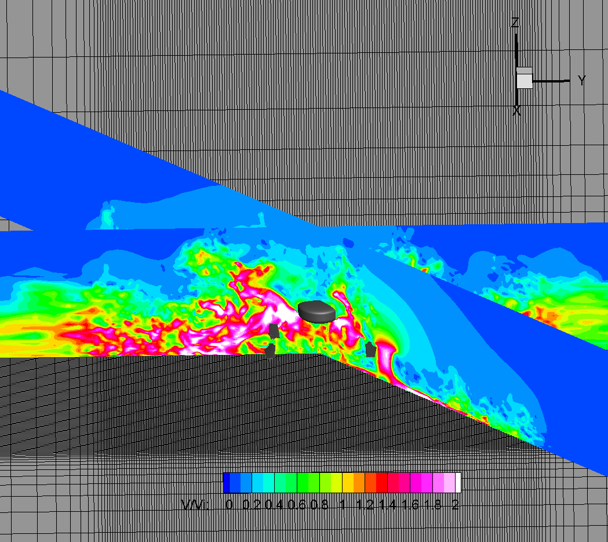Research on Aerodynamics of Multiple Rotors
JAXA Supercomputer System Annual Report April 2020-March 2021
Report Number: R20ECMP17
Subject Category: Competitive Funding
- Responsible Representative: Yasutada Tanabe, Senior Researcher, Aeronautical Technoloty Directorate, Aviation Systems Research Unit
- Contact Information: Yasutada Tanabe(tanabe.yasutada@jaxa.jp)
- Members: Yasutada Tanabe, Hideaki Sugawara, Riku Tanaka, Kuniyuki Takekawa, Keita Kimura
Abstract
This research is aiming to clarify the complex flow fields around the multiple-rotor type drones and eVTOLs (electrically driven Vertical.Take-Off and Landing aircraft) through high-fidelity CFD simulations. The noise from the multiple rotors, the multiple rotors in ground effect, and the downwash from the rotors and the outwash on the ground are analysed so far.
Reference URL
Please refer to https://www.aero.jaxa.jp/eng/research/frontier/rotary/ .
Reasons and benefits of using JAXA Supercomputer System
The flow fields around rotary wings are essentially unsteady and associate with blade deformation and pitch variations. Both temporal and spatial high-resolutions are generally required for the high-fidelity CFD simulations, which are computationally very costly. Utilization of high-end super-computing capabilities are a must requirement for this kind of research.
Achievements of the Year
In FY2020, a quadrotor drone as shown in Fig. 1 hovering above a ground plane is studied. The flight performance of the drone in ground effect and the structure of the flow field are investigated. As a referrence, a single rotor hovering at a height of 0.5 rotor diameter is shown in Fig. 2 together the flow field represented by iso-surfaces of the Q-criterion. It can be seen that the downwash from the rotor flows along the ground plane and spread out evenly. For the quadrotor drone, as shown in Fig. 3, the structure of the flow field is complex. Flow recirculation is observed in the inner part of the drone, which indicates a bit of flight performance degradation could occur at this flight height. The flow on the ground is shown in Fig. 4. Along the plane crossing the rotor centers, the outwash resembles that of the single rotor. But along the central plane between the rotors, the outwash extends to a higher altitude, this may cause influences on the persons nearby.
Publications
- Peer-reviewed papers
1) Yasutada Tanabe, Hideaki Sugawara, Shigeru Sunada, Koichi Yonezawa, Hiroshi Tokutake:Quadrotor Drone Hovering in Ground Effect, Journal of Robotics and Mechatronics, Vol. 33, No. 2, 2021.
- Non peer-reviewed papers
1) Yasutada Tanabe, Hideaki Sugawara, Shigeru Sunada, Hiroshi Tokutake, Koichi Yonezawa: Numerical Simulation of a Multicopter in Ground Effect, 58th Aircraft Symposium, Online, November 25-27, 2020.
Usage of JSS
Computational Information
- Process Parallelization Methods: N/A
- Thread Parallelization Methods: OpenMP
- Number of Processes: 1
- Elapsed Time per Case: 2000 Hour(s)
Resources Used(JSS2)
Fraction of Usage in Total Resources*1(%): 0.32
Details
Please refer to System Configuration of JSS2 for the system configuration and major specifications of JSS2.
| System Name | Amount of Core Time(core x hours) | Fraction of Usage*2(%) |
|---|---|---|
| SORA-MA | 114,010.97 | 0.02 |
| SORA-PP | 248,096.23 | 1.94 |
| SORA-LM | 0.00 | 0.00 |
| SORA-TPP | 106,568.94 | 10.06 |
| File System Name | Storage Assigned(GiB) | Fraction of Usage*2(%) |
|---|---|---|
| /home | 3,553.26 | 3.26 |
| /data | 14,210.65 | 0.27 |
| /ltmp | 2,664.57 | 0.23 |
| Archiver Name | Storage Used(TiB) | Fraction of Usage*2(%) |
|---|---|---|
| J-SPACE | 6.24 | 0.21 |
*1: Fraction of Usage in Total Resources: Weighted average of three resource types (Computing, File System, and Archiver).
*2: Fraction of Usage:Percentage of usage relative to each resource used in one year.
Resources Used(JSS3)
Fraction of Usage in Total Resources*1(%): 0.39
Details
Please refer to System Configuration of JSS3 for the system configuration and major specifications of JSS3.
| System Name | Amount of Core Time(core x hours) | Fraction of Usage*2(%) |
|---|---|---|
| TOKI-SORA | 296,580.56 | 0.06 |
| TOKI-RURI | 499,531.47 | 2.86 |
| TOKI-TRURI | 19,187.89 | 1.55 |
| File System Name | Storage Assigned(GiB) | Fraction of Usage*2(%) |
|---|---|---|
| /home | 4,552.15 | 3.12 |
| /data | 19,505.65 | 0.33 |
| /ssd | 1,165.62 | 0.61 |
| Archiver Name | Storage Used(TiB) | Fraction of Usage*2(%) |
|---|---|---|
| J-SPACE | 6.24 | 0.21 |
*1: Fraction of Usage in Total Resources: Weighted average of three resource types (Computing, File System, and Archiver).
*2: Fraction of Usage:Percentage of usage relative to each resource used in one year.
JAXA Supercomputer System Annual Report April 2020-March 2021






